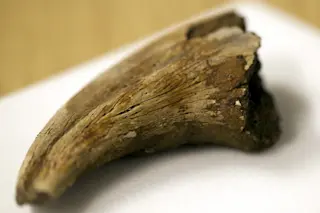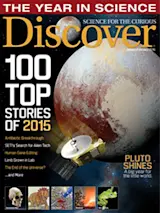An off-the-clock project begun on a whim may cause paleontologists and museum curators to rethink their fossil collections.
Preserved soft tissue from dinosaurs is limited to a handful of exceptional specimens. In all but the most unusual circumstances, the tissue breaks down quickly after death — even remnant proteins were believed to last a few million years at most.
In June, however, researchers reported evidence of blood cells and collagen fibers in poor-quality fossil fragments that were 75 million years old. The discovery opens a new avenue into studying dinosaur physiology and could spur changes in how fossils are analyzed.
After analyzing the claw, researchers found structures resembling blood cells, shown in red. | Sergio Bertazzo/Imperial College London
The project was born when paleontologist Susannah Maidment and biomedical researcher Sergio Bertazzo struck up a casual conversation at Britain’s Imperial College London. Bertazzo, who researches microcalcification in living tissue, was curious ...















